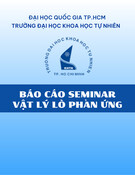
Original
article
A
comparison
of
photosynthetic
responses
to
water
stress
in
seedlings
from
3
oak
species:
Quercus
petraea
(Matt)
Liebl,
Q
rubra
L and
Q
cerris
L
D
Epron
E
Dreyer
G
Aussenac
Laboratoire
de
bioclimatologie
et
d’écophysiologie
forestières,
INRA
Nancy,
Champenoux,
54280
Seichamps,
France
Summary —
Photosynthetic
responses
of
oak
seedlings
(Quercus
petraea,
Q
rubra
and
Q
cerris)
to
drought
were
investigated
using
gas-exchange
and
chlorophyll
fluorescence.
Decreases
in
predawn
leaf
water
potential
(ψ
wp
)
led
to
pronounced
reductions
in
both
stomatal
conductance
(g
w)
and
net
CO
2
assimilation
rate
(A).
In
contrast,
the
maximal
photochemical
efficiency
of
photosystem
II
(PS
II)
measured
predawn
(F
v
/F
m)
remained
unaffected
until
complete
cessation
of
CO
2
assimilation.
Re-
sponses
of
PS
II
photochemical
efficiency
(ΔF/F
m’
)
to
increasing
photon
flux
density
(PFD)
were
de-
termined
for
leaves
of
both
control
and
water-stressed
seedlings.
Drought
resulted
in
a
stronger
re-
duction
of
ΔF/F
m.
at
a
given
PFD
in
Q
rubra
and
Q
petraea,
but
not
in
Q
cerris,
and
led
to
an
overreduction
of
the
primary
electron
acceptor
pool
(decrease
in
photochemical
quenching,
qp
).
Such
behavior
could
explain
the
observed
increase
in
sensitivity
to
photoinhibition
when
these 2
species
were
water-stressed.
In
contrast,
drought
did
not
promote
such
an
increase
in
the
suscepti-
bility
of
Q
cerris
leaves
to
photoinhibition.
chlorophyll
fluorescence
/
oak
/
photosynthesis
/
drought
/
photoinhibition
Résumé —
Comparaison
de
la
réponse
au
déficit
hydrique
de
la
photosynthèse
de
semis
de
3
espèces
de
chêne :
Quercus
petraea
(Matt)
Liebl,
Q
rubra
L
et
Q
cerris
L.
La
réponse
de
la
photosynthèse
à
la
sécheresse
a
été
étudiée
sur
des
semis
de
chêne
(Quercus
petraea,
Q
rubra
et
Q
cerris)
par
des
mesures
d’échange
gazeux
et
de
fluorescence
de
la
chlorophylle.
La
diminution
du
potentiel
hydrique
de
base
(ψ
wp
)
a
entraîné
une
réduction
importante
de
la
conductance
stomatique
(g
w)
et
de
l’assimilation
nette
de
CO
2
(A).
Par
contre,
l’efficience
photochimique
maximale
du
PS
II
mesurée
en
fin
de
nuit
(F
v
/F
m)
n’a
pas
été
affectée
tant
qu’un
arrêt
complet
de
l’assimilation
de
CO
2
*
Correspondence.
Abbreviations:
A:
net
CO
2
assimilation
rate;
gw:
stomatal
conductance
to
water
vapour;
ψ
wp
:
pre-
dawn
leaf
water
potential;
π
0:
osmotic
potential
at
full
turgor;
ψ
wtl
:
water
potential
at
turgor
loss;
D:
leaf
water
deficit;
PS
II:
photosystem
II;
QA:
primary
electron
acceptor;
F0
and
Fm:
initial
and
maxi-
mal
fluorescence;
Fv
/F
m:
maximal
photochemical
efficiency
of
PS
II
in
the
dark-adapted
state;
ΔFI
F
m’
:
photochemical
efficiency
of
PS
II
in
a
light-adapted
state;
Fv
/Fm’
:
photochemical
efficiency
of
open
PS
II
reaction
centers
in
a
light-adapted
state;
qp:
photochemical
fluorescence
quenching;
PFD:
photon
flux
density.

n’était pas
intervenu.
Des
réponses
de
l’efficience
photochimique
du
PS
II
(ΔF/F
m’
)
à
une
augmenta-
tion
de
la
densité
de
flux
quantique
(PFD)
ont
été
établies
pour
des
feuilles
de
semis
irrigués
et
sou-
mis
à
sécheresse.
Le
déficit
hydrique
a
entraîné
une
plus
forte
réduction
de
ΔF/F
m’
à
un
PFD
donné
pour Q
rubra
et Q
petraea,
s’accompagnant
d’une
plus
forte
réduction
du
pool
d’accepteurs
primaires
d’électrons
(diminution
du
quenching
photochimique,
qp
).
Ce
comportement
pourrait
expliquer
l’augmentation
de
la
sensibilité
à
la
photo-inhibition
des
feuilles
des
plants
soumis
à
sécheresse
de
ces
2 espèces.
Au
contraire,
la
sécheresse
n’a
pas
entraîné
de
différence
de
réduction
du
pool
d’accepteurs
primaires
d’électrons,
ni
de
la
sensibilité
à
la
photo-inhibition
des
feuilles
de
Q
cerris.
fluorescence
de
la
chlorophylle / chêne / photosynthèse / sécheresse / photo-inhibition
INTRODUCTION
Oak
species
are
distributed
over
a
large
geographic
range
and
display
great
varia-
tions
in
their
abilities
to
tolerate
periods
of
restricted
water
supply.
This
latter
factor
probably
plays
a
major
role
in
the
control
of
the
distribution
of
the
various
oak
spe-
cies.
Some
species
have
evolved
very
specialized
adaptive
features
which
are
thought
to
enable
better
survival
under
drought,
such
as
sclerophylly,
restricted
area
of
individual
leaves
and
thick
cuti-
cles.
However,
even
among
the
more
mesophytic
and
deciduous
species,
some
important
differences
in
tolerance
to
drought
appear. For
instance,
thorough
ecological
studies
showed
that
Q
robur
and
Q
petraea
had
different
water
supply
requirements,
the
former
being
more
sen-
sitive
to
drought
and,
as
a
consequence,
more
prone
to
drought-induced
decline
(Becker
and
Lévy,
1982).
Nevertheless,
the
physiological
mechanisms
involved
in
this
differentiated
water
stress
tolerance
are
still
poorly
understood.
Efficiencies
of
soil
water
extraction
and
of
water
trans-
port
pathways
in
the
trees
probably
play
a
major
role
and
differ
significantly
among
species
(Abrams,
1990;
Cochard
et
al,
1992;
Bréda
et al,
1993).
In
addition,
the
ability
to
maintain
significant
rates
of
CO
2
assimilation
and
to
keep
a
functional
pho-
to-synthetic
apparatus
during
drought
may
have
an
important
role
in
this
re-
spect.
Drought-induced
stomatal
closure
is
now
well
documented.
In
many
recent
studies
it
has
been
reported
to
be
the
primary
factor
promoting
the
decrease
in
net
assimilation
rates
during
drought
(kaiser,
1987;
Comic
et
al,
1989).
Moreover,
the
photosynthetic
apparatus
and
in
particular,
the
potential
photochemical
activity
of
PS
II,
has
been
shown
to
be
highly
insensitive
to
rapid
leaf
dehydration
in
the
dark
for
Q
petraea
(Ep-
ron
and
Dreyer,
1992)
and
for
a
large
spec-
trum
of
species
(Dreyer
et
al,
1992).
Rapid
leaf
dehydration
does
not
affect
photochem-
istry
above
degrees
of
dehydration
only
rarely
attained
under
natural
conditions.
Still,
the
question
remains
as
to
whether
gradually
increasing
drought
can
affect
the
photosynthetic
processes
when
it
is
im-
posed
under
medium
or
high
irradiance.
In
particular,
the
relationship
between
water-
stress
intensity
and
light-induced
disorders
in
PS
II
activity
still
has
to
be
clearly
as-
sessed.
Chlorophyll
a
fluorescence
may
be
used
to
estimate
quantum
efficiencies
of
PS
II
under
diverse
environmental
con-
straints
(Baker,
1991)
and
is
therefore
a
useful
tool
to
study
physiological
conse-
quences
of
drought
on
photosynthetic
elec-
tron
transport.
To
test
responses
of
different
oak
spe-
cies
to
a
combination
of
water
stress
and
high
irradiance,
we
subjected
potted
seed-
lings
to
a
gradually
increasing
drought
and
monitored
predawn
leaf
water
potential,
gas
exchange
and
photochemical
efficien-
cy
of
PS
II.
Selected
species
were
Q
cer-

ris,
a
SE
European
species
known
to
be
relatively
drought
tolerant,
Q
petraea,
an
important
mesophytic
timber
species
of
W
Europe
and
Q
rubra,
a
NE
American
spe-
cies
probably
slightly
more
sensitive
to
drought.
Q
cerris
has
the
thickest
leaves
and
bears
a
high
amount
of
trichomes;
Q
petraea
has
been
shown
to
be
less
prone
to
drought-induced
embolism
than
Q
rubra
(Cochard et al,
1992).
MATERIAL
AND
METHODS
Seedlings
of
Quercus
petraea
(Matt)
Liebl
(Fo-
rêt
de
la
Reine,
Toul,
NE
France),
Q
cerris
L
(commercial
seedlots)
and
Q
rubra
L
(Féné-
trange,
NE
France)
were
grown
in
a
naturally
il-
luminated
greenhouse
from
March
to
Septem-
ber
1990,
in
5-I
pots
filled
with
a
1:1
(v/v)
mixture
of
sand
and
blond
peat,
fertilized
with
2.0
g
of
Nutricote
100
(N/P/K:
13/13/13)
and
complemented
with
a
mixture
of
oligoelements,
and
4
g
of
magnesium
chalk.
The
plants
were
irrigated
daily.
One
week
before
the
onset
of
the
experiments,
the
seedlings
were
transport-
ed
into
a
growth
cabinet
with
the
following
day/
night
conditions:
16/8
h;
relative
humidity,
70/
95%;
air
temperature,
22/16
°C.
Photosynthetic
photon
flux
density
(PFD)
provided
by
neon
lamps
was
around
200
μmol
m
-2
s
-1
at
the
top
of
the
plants.
Stress
application
and
experimental
design
Drought
was
imposed
on
6
seedlings
from
each
species
by
withholding
irrigation
for
9
days.
Pre-
dawn
leaf
water
potential
(ψ
wp),
relative
water
content,
gas
exchange
and
chlorophyll
a
fluores-
cence
characteristics
were
monitored
every
day
on
half
of
the
plants
on
the
last
fully
developed
growth
flush.
Three
plants
were
kept
as
controls.
Responses
of
photochemical
efficiency
to
increasing
PFD
and
susceptibility
to
high
light
stress
were
studied
on
3-4
leaf
disks
(10
cm
2)
punched
from
either
well-watered
or
water-
stressed
plants
(predawn
leaf
water
potential
ψ
wp
=
-3.0
MPa
in
the
latter
case).
Each
leaf
disk
was
inserted
into
the
compartment
of
a
leaf-disk
O2
electrode
(Hansatech,
UK).
A
stream
of
water-vapor
saturated
air,
maintained
at
23°C,
and
with
ambient
CO
2,
was
sufficient
to
prevent
dehydration
or
heating
of
leaf
tissues.
PFD
was
changed
every
10
min
from
135
to
230,
460, 890,
1300
and
1750
μmol
m
-2
s
-1
.
Then,
the
leaf
disk
was
exposed
to
a
PFD
of
1750
μmol
m
-2
s
-1
for
135
min
and
finally
put
in
the
dark
for
45
min
to
determine
long-term
changes
in
maximal
photochemical
efficiency.
Leaf
water
status
Predawn
leaf
water
potential
(ψ
wp
)
was
meas-
ured
with
a
pressure
chamber
on a
single
leaf
of
each
seedling,
while
relative
water
content
was
estimated
from
2
disks
punched
through
this
leaf
prior
to
introduction
into
the
pressure
cham-
ber.
The
2
leaf
disks
(2
cm
2)
were
immediately
weighed
(W
f
),
used
for
fluorescence
measure-
ments,
rehydrated
by
floating
on
distilled
water
for
4
h
at
4
°C
in
the
dark
to
determine
saturated
weight
(W
s)
and
oven-dried
for
24
h
at
80 °C
to
determine
dry
weight
(W
d
).
Relative
water
con-
tent
was
calculated
as
RWC
=
(W
f
-W
d
)/(W
s-
Wd
);
and
leaf
water
deficit
expressed
as
D
=
1-RWC.
Osmotic
potential
at
full
turgor
(π
0)
and
water
potential
at
turgor
loss
(ψ
wtl
)
were
assessed
on
well-watered
controls
by
means
of
a
pressure-
volume
analysis
using
the
transpiration
method
described
by
Hinckley
et al (1980)
and
Dreyer
et
al
(1990).
Three
shoots
were
severed
from
3
well-watered
seedlings
of
each
species
and
re-
hydrated
overnight
through
the
cut
end.
Water
potentials
of
freely
transpiring
shoots
(ψ
w)
were
measured
at
regular
time
intervals
from
0
to
-6.0
MPa
in
a
pressure
chamber.
Shoot
weight
was
recorded
to
calculate
shoot
water
deficit
as:
D
=
1-[(W
f
-
Wd
)/(W
i
-
Wd
)],
where
Wf,
Wi
and
Wd
represent
respectively,
shoot
weight
meas-
ured
immediately
after
ψ
w
determination,
initial
weight
of
the
rehydrated
shoot
and
dry
weight
of
the
shoot.
Gas-exchange
measurements
Stomatal
conductance
for
water
vapour
(g
w)
and
net
CO
2
assimilation
rate
(A)
were
recorded
us-

ing
a
portable
gas-exchange
measurement
sys-
tem
(LiCor
6200,
Lincoln,
NE,
USA).
Average
(±
standard
deviation)
leaf
temperature
(t
a
),
leaf-
to-air
difference
in
vapor
mol
fraction,
CO
2
mole
fraction
in
the
air
(c
a
),
and
PFD
at
the
leaf
sur-
face
were,
respectively,
23.9
(±
0.9)°C,
11.6
(±
3.3)
mmol
mol
-1
,
440
(±24)
μmol
mol
-1
and
194
(±
22)
μmol
m
-2
s
-1
.
Both
A
and
gw
were
com-
puted
according
to
von
Caemmerer
and
Farqu-
har
(1981)
and
expressed
on
a
projected
leaf-
area
basis
(ΔT
area
meter,
ΔT
Devices,
UK).
Measurements
were
made
3—4
h
after
the
onset
of
the
light
period.
Chlorophyll
a
fluorescence
measurement
Chlorophyll
a
fluorescence
of
PS
II
was
meas-
ured
using
a
pulse
amplitude
modulated
fluo-
rometer
(PAM
101,
Walz,
Germany)
as
previ-
ously
described
(Epron
and
Dreyer,
1992).
Leaf
disks
(2
cm
2)
were
punched
from
overnight
dark-adapted
seedlings.
Initial
fluorescence
(F
o
),
when
all
PS
II
reaction
centers
were
open,
was
obtained
using
a
weak
light
(less
than
1
μmol
m
-2
s
-1
)
from
a
light-emitting
diode
(λ
max
,
650
nm;
pulse
duration,
1
μsec;
frequency,
1.6
kHz).
Maximum
fluorescence
(F
m)
when
all
PS
II
reaction
centers
were
closed,
was
recorded
during
a
flash
of
saturating
white
light
(4000
μmol
m
-2
s
-1).
Maximal
photochemical
efficien-
cy
of
PS
II,
ie,
in
the
dark-adapted
state,
was
calculated
according
to
Genty
et
al
(1987)
as:
Fv
/F
m
= (F
m
-F
o
)/F
m.
Photochemical
efficiency
of
PS
II
was
deter-
mined
during
the
establishment
of
light
re-
sponse
curves,
after
10
min
at
each
successive
PFD
(135,
230,
460,
590,
1300
and
1750 μmol
m
-2
s
-1).
Steady-state
fluorescence
(F)
and
maximal
fluorescence
following
a
saturating
flash
(Fm’
)
were
recorded
and
used
to
compute
the
photochemical
efficiency
of
PS
II
as:
ΔF/F
m’
=
(Fm’
-F)/F
m’
(Genty
et al,
1989).
After
each
10-
min
period,
the
actinic
light
was
switched
off
for
1
min
to
allow
recording
of
basic
fluorescence
F
0’
and
to
compute
photochemical
efficiency
of
open
PS
II
reaction
centers
as:
F
v’/Fm’
= (F
m’
-
F
0’
)/F
m’
(Genty
et
al,
1989).
The
two
parameters
are
related
by
the
equation:
ΔF/F
m’
=
qp
·
F
v’/Fm’
;
where
qp
is
the
photochemical
quenching,
ie
the
fraction
of
open
PS
II
reaction
centers.
Decreas-
es
in
qP
are
generally
ascribed
to
increased
re-
duction
of
the
primary
acceptor
QA,
while
de-
crease
of
F
v’/Fm’
.
are
thought
to
reveal
enhanced
thermal
deexcitation
of
PS
II
(Baker,
1991).
To
test
the
effects
of
high
light
stress
we
compared
Fv
/F
m
before
exposure
to
light
and
af-
ter
a
complete
PFD
response
curve
followed
by
an
additional
135
min
at
1750
μmol
m
-2
s
-1
and
45
min
darkness.
RESULTS
Drought
progression
and
plant
water
status
During
the
first
4
days,
soil
water
content
decreased
from
0.5
to
0.2
g
-1
of
dry
weight
without
any
significant
decrease
in
pre-
dawn
leaf
water
potential
ψ
wp
.
Thereafter,
ψ
wp
declined
steadily
and
reached
values
below
-6.0
MPa
5
days
later.

Decreases
in
ψ
wp
led
to
increases
in
leaf
water
deficit,
D
after
an
initial
period
of
marked
variability.
But
the
relationship
be-
tween
D
and
ψ
wp
displayed
some
interspe-
cific
differences:
for
a
given
value
of
ψ
w,
Q
rubra
displayed
higher
deficits
than
the
other
2
species
(fig
1).
For
example,
a
ψ
wp
of
about
-3
MPa
was
accompanied
by
a D
for
≈ 0.26
in
Q
cerris
and
Q
petraea,
but
of
≈ 0.30
in
Q
rubra.
Osmotic
potential
at
full
turgor
(π
0)
and
leaf
water
potential
at
turgor
loss
(ψ
wtl
)
measured
on
well-watered
seedlings
are
presented
in
table
I.
Q
cerris
displayed
sig-
nificantly
lower
π
0
and
ψ
wtl
,
while
the
other
2
species
behaved
similarly.
A
discrepancy
between
these
data
and
the
D -
ψ
wp
rela-
tionship,
as
presented
in
figure
1,
ap-
peared
for
all
species:
D
for
a
given
value
of
ψ
w
was
always
higher
(lower
water
con-
tent)
during
the
progression
of
dehydration
than
during
the
establishment
of
pressure-
volume
relationships
with
well-watered
seedlings.
This
may
be
due
either
to
shifts









![Báo cáo seminar chuyên ngành Công nghệ hóa học và thực phẩm [Mới nhất]](https://cdn.tailieu.vn/images/document/thumbnail/2025/20250711/hienkelvinzoi@gmail.com/135x160/47051752458701.jpg)






